Across the automotive industry there is a continuing push to develop and manufacture the more efficient electric vehicle batteries, in terms of performance and cost. In the UK, the Faraday Battery Challenge has been investing in supporting innovative technology development. Challenge director, Tony Harper discussed the technologies and progress with AMS.
AMS: Could you give us an overview of the Faraday Battery Challenge, its origins and purpose?
Tony Harper: The Faraday Battery Challenge started in 2017 in response to a study done back then by the Automotive Council and the government, and it was the first time that anybody had really quantified what the transition to electrification was going to mean for automotive.
I was heading up research engineering at Jaguar Land Rover at the time, and with a few colleagues in the rest of the industry we started calculating the transition to electric vehicles, which at the time was being driven by the European fleet CO2 targets. But even then, we alarmed ourselves at the size of the demand for batteries that there would be, just from automotive, by 2030 and 2035. I think we calculated somewhere in the region of 20, 30 gigawatt-hours by 2030 and more by 2035.

At that point we weren’t prepared for this. The first battery factory in the country then was in Sunderland and that was only producing about one and a half gigawatt-hours a year, clearly not enough. So, one of the responses to that was for the government to announce what was a £246m research innovation challenge.
The first part is the investment in something called The Faraday Institution, which is a set of very large-scale science programmes for batteries, which is part of the Faraday Battery Challenge. It’s what we call the mid Technology Readiness Level Programme, or the Business-Led Innovation Programme, which is basically stimulating our technology sector to come forward with new innovations in batteries. The third big element was the construction of the Battery Industrialisation Centre in Coventry, which has been complete and operational for about a year now.
The Faraday Battery Challenge, which I’m a director of, is all three of those elements. It started back in 2017 as a £246m programme. Over the last 5 years it’s grown to £330m, and we’re just about to move into the next three years. In addition, we’ve just launched a new £25m Business-Led Innovation competition as well.
The whole programme really is about providing a pipeline that goes all the way from science through to tech company innovation, through to preparing for giga-factories to prepare us for what is now going to be a much bigger demand.
AMS: How many projects around the Battery Challenge are currently in progress?
TH: In the Faraday Institution, which is the very large-scale scientific programmes, we’ve got about 10 large-scale programmes in there. The choice was we could either just throw money at our scientists and hope for the best over the next 10 years, or we can put together some very large-scale targeted science programmes to really deliver and really leverage our scientific talent, and really deliver over the next few years. We decided to do the latter. We decided to construct the Faraday Institution to do that with us.
In the Business-Led Innovation parts there are around 90 projects, or over four rounds of project competition that we’ve had over the last five years. Many of those have reached completion over that five-year period. There’s about 10 that are still in flight. But in broad numbers there’s 10 large-scale science programmes, and over the last five years we’ve got about 90 Business Led Innovation technology programmes.
AMS: You have reportedly completed phase one, could you describe the phases you are working through?
TH: The phases that people end up talking about are a little bit of an artefact of the public spending cycles. The first public spending cycle was a four-year cycle. So, there was a tactical one-year spending review, and last autumn we had a three-year spending review.
So, phase one in spending review terms was the first four years plus the one-year tactical spending review. Phase two, as we’re calling it, is the three-year spending review, which we’re just heading into.
AMS: You mentioned you’ve got 10 large-scale projects and then 90 smaller business innovation projects. Is there a set timeline for those projects?
TH: Sometimes we run relatively short feasibility projects, looking at whether we can mine lithium in the UK, a short 12-month feasibility study looking at whether you can use graphite in cathodes. That is a short feasibility project.
The larger scale projects where you’re looking at delivering a relatively significant advantage, either at the cell level or at the modular level or the pack level, tend to be 24 or maybe even 36-month long projects. We launched the first round of these back in 2018, and we’ve had four rounds. There’s been phases of 12-month feasibility projects plus the longer 24 to 36-month projects.
But this field moves fast and having projects that are in and of themselves much longer duration, you run the risk of becoming out-of-date during the project. So having 12 to 24-month projects is about right.
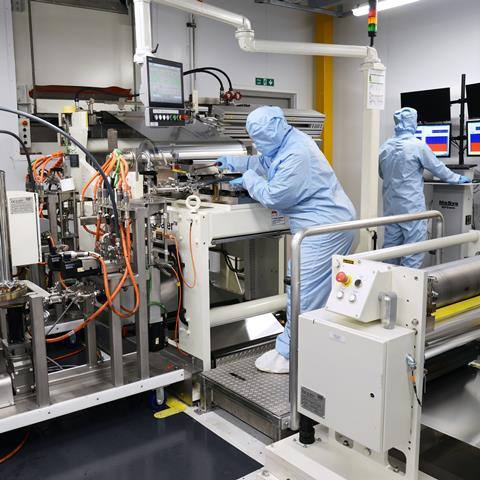
AMS: When you initiated the Faraday Battery Challenge back in 2017, you mentioned the scale of the challenge in terms of the volumes that were needed. Were there companies in place that could support this, or have they been created as a result of this programme?
TH: Even though there hadn’t been targeted investment in this research space prior to the Faraday Battery Challenge, there had been several really interesting spin-out companies that had been established since maybe 2008.
There was Ilika, a solid-state company spun-out from Southampton University some years ago. There’s also Nexeon, that was a silicon-anode company that has spun-out of Oxford University, I could reel off a lot of companies that are in our programme that were, essentially, spin-outs of previous scientific investment, but they were at lab scale in 2017 and struggling to attract investment, to get the R&D resources they needed to scale up, and struggling to find anywhere to physically go and make batteries based on their technology.
There was a whole clutch of companies of that nature and at that stage which, when the Faraday Battery Challenge came along, and we had our first investment in the business-led R&D. Many of them have grown from spinouts to SME, to now decent sized companies, with the support of the Faraday Battery Challenge.
AMS: Could you offer more detail on some of these companies and the developments they have been working on?
TH: One of these is i-CoBat and they are working on an immersive cooling project with the Ricardo. People talk about the energy density of cells and the formats of cells, which is important, but what car companies really care about is the performance at the pack level, and the cost at the pack level. And, if we call it traditional batteries, generation one batteries tend to be significantly compromised in their cost and their energy density by all the management paraphernalia that you need around them. From a heat point of view, batteries cells are basically resistors. You put a lot of current into them and you take a lot of current out of them, and they heat up. And first generation of batteries sort of recognised that. They put cooling plates in and then they put water cooling systems in, intercooler cooling plates, and there’s all sorts of paraphernalia about that and before you know where you are there’s an awful lot of cost and package inefficiency at the pack level.
The innovation around this project basically to get rid of all of that and immerse cells in a coolant, in an innovative way that’s got interesting heat exchange properties. And they’ve been able to demonstrate an increase in energy density, and the ability to fast-charge batteries better than before, because you’re not worried about getting the heat out.
So, it’s basically an innovation that meets all the Challenge’s goals, in terms of charging and cost, energy density, and so on, and can provide a different solution to manufacturers who are really only interested in what happens at the pack level. We’ve built that capability in the UK, and we’ve got a lot of customers at the high end, that require that kind of solution. So, watch this space for that being taken up by the industry.
But fundamentally, it’s a project that wouldn’t have happened without the stimulation from the challenge. It certainly wouldn’t have happened in time with the partners that it did. And here we are, we’ve generated a UK IP with a great company that’s able to provide the solution.
That’s just one example. Another is GRAMOX. They are using some interesting IP around the use of graphite. Graphite’s been a solution looking for a problem for a while. We funded an initial feasibility study with a company called Anaphite and some partners, including Warwick Manufacturing Group, who were basically looking at the possibility of using graphite on the cathode, with the metal oxide that’s normally used, to improve the mobility of ions going in and out of the cathode.
Fundamentally, if you can imagine you’ve got graphite on one side, you’ve got a metal oxide cathode, and when you charge lithium-ions they go from one side and they nestle in the other side. And when you discharge it, they do it the other way around. It’s not actually a chemical reaction, it’s almost like a chemical spring. Therefore, the efficiency and the ability to hold energy and release energy depends on the mobility of the ions as they go into either the anode or the cathode, and the ability for that electrode to hold the ions. In principle, graphite can help with the structure of that. In practice, nobody had done it before, and there was a first feasibility study to work out whether it could be done, whether it worked at lab level, etc. And that was a very positive result. And this is now looking at scaling that up into an actual cell.
Car companies, or anybody else for that matter, won’t believe any of this until they not only can see a cell but also cycle a cell in their own equipment, in their own laboratories. That’s a big hurdle for companies that are inventing new things. And what we’re doing is helping them go from a theory to a validated theory, to a cell, to a validation with car companies to say, this works, and we can pull the technology through.
AMS: Is the UK Battery Industrialisation Centre (UKBIC) involved with this as well?
TH: Yes, although they won’t yet, because this particular project will still be making a very small numbers of cells, almost handmade. The UKBIC is several steps on from there, where you’ve got a cell, you’ve validated it, you can make it in the tens in a lab, but you’ve got to work out what your industrial processes are to make that technology in the millions.
And it’s not just a question of do the same thing but make a million of them, because all the processes change and the battery performance is very linked to the process by which these batteries are made, not just the makeup of the cells themselves. And again, from a company growth point of view, unless you’ve got your own £130m facility to do that, you’re stuck. That’s why Britishvolt are using UKBIC quite so much because, essentially, they’re a battery company that can’t make batteries now, but they can make them at scale in UKBIC, demonstrate to their investors and their customers that their technology works, raise the money, build their own facility.
We have other facilities. There’s one at Warwick Manufacturing Group that allows cells to be made in intermediate volumes.

AMS: Where do you see the most progress in battery development being made in the near future?
TH: It’s interesting. The short answer is that there will be significant developments on the anode side. Tesla has talked a lot about the larger format cell, and about silicon anodes, or increasing amounts of silicon in the anode. And they are right – those will be very significant developments. Silicon in the anode basically allows a higher energy density. The problem with it is that silicon expands and contracts as you charge and discharge it.
Adding silicon, which is really an abundant material, to graphite, which is another abundant material on the anode side, really transforms the performance of batteries but the stuff expands and contracts and will crack. So, the development and the science is around trying to work out ways that you can put relatively large amounts of silicon in the anode without that expansion turning up at the macro scale; that it could be contained at the microscale.
There’re just huge developments going on there and we’ve got great IP in the UK, and there’s a lot going on inside our challenges that’s going to do that, and it’s going to really push where we are on traditional lithium-ion today to a much better place and, also, silicon is low-cost as well, so it will drop some of the cost out.
Also, I think that we’re seeing a fragmentation of the battery market where you can see lower cost, lower energy density batteries such as lithium iron and phosphate starting to get a grip. And the reason for that is that they are good enough and they can be highly engineered at the module and pack level to give you relatively good energy densities at the pack level, without necessarily being stellar at the cell level. But you’re also seeing increase in manganese content in those batteries as well, which is increasing the performance.
So again, from an engineering point of view it’s challenging and there’s a lot to do there. Is it next-generation and is it going to blow people’s minds? Not necessarily. Is it going to be really profound over the next couple of years? Yes, absolutely, because it’s going to really get the price point of volume cars to where they need to be.
That will be in the next couple of years. But then we’re also seeing huge developments in sodium-ion, which again is one of those lower performance but, in principle, much better from a sustainability and materials supply chain point of view.
We’ll see higher voltage – they’re called higher voltage spinel cathodes, coming in at the high-end, particularly around performance cars and maybe even all-electric flight. The challenge there is getting electrolytes that don’t degrade.
And then there’s two next-gens really, which everyone is still working at, which is to get to true solid-state with the advantages of solid-state, and lithium-sulphur batteries, which are conversion cathode batteries. Basically, the holy grail there is they’re light and they have a lot of energy density and so on. They will work well for really high-performance cars and electric flight as well, which is why nobody’s giving up on them because they are crucial to that.
But they’ve both still got a lot of challenges. Lithium-sulphur batteries tend to eat their own electrolyte as they cycle. We’ve got a big science programme on that one. One of our 10 big projects is on how you find electrolytes that don’t eat themselves in lithium-sulphur batteries and solid-state. Which everybody’s still talking about and lots of companies are maybe demonstrating, but from what we can see, the price point, the performance point of the first-generation solid-state batteries is nowhere near where it needs to be.
AMS: There is an idea that lower cost batteries are ‘good enough’ depending on what they’re asked to do. You don’t need the biggest, long-range battery for a car that’s an urban run-around. What’s your view on this?
TH: No, you don’t. What some companies are demonstrating is, because some of those chemistries like lithium-ion phosphate are less innately volatile at the cell level, you don’t need to manage them as much at the pack level in terms of their safety and their thermal properties. And that drops a lot of cost out and it allows you to package large amounts of relatively inefficient cells, but at the pack level that turns out to be good enough. You’re going to see a lot of that. There’s some excitement in terms of the formats and the increased manganese and so on, but particularly in the clever ways in which cells are engineered into packs or engineered into cars. That vertical design integration is going to be very interesting over the next few years.
AMS: What are the biggest sustainability challenges you’re facing in relation to battery production?
TH: There is a lot of energy used in cell production. For example, at UKBIC there’re two 40-meter-long drying lines for the electrodes powered by electricity. And then there’s the clean and dry rooms. Interestingly, as you go to higher nickel chemistries, the tolerance to moisture and dirt in the air when they’re manufactured, drops. That means that you’ve got to hold these manufacturing facilities at a very low dewpoint, and a very high level of air cleanliness. And maintaining a production facility in that state 24/7 consumes a lot of energy. In fact, maintaining correct environment for the clean and dry rooms is probably the biggest consumer of electricity in a battery plant. Then you’ve got all the formation aging and testing, where banks of equipment are doing all the initial cycling of the batteries, turning them from a bag of chemicals into an actual battery and this also requires huge amounts of energy.
However, it’s still much better over a lifecycle than internal combustion engine cars. Taking Britishvolt as an example, their solution to this to use low carbon electricity from an offshore windfarm located close to their planned production site. That’s one way of doing it but over time we’ve really got to drive out the innate power requirements





























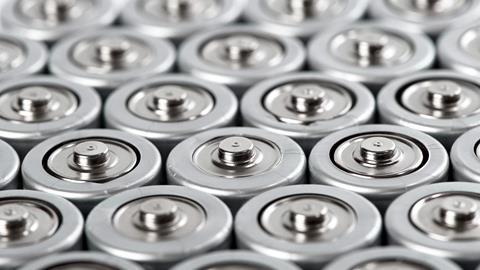
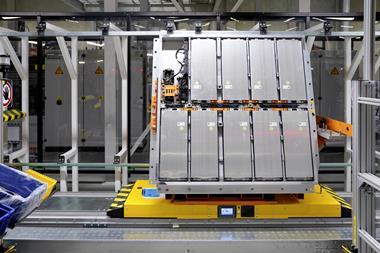
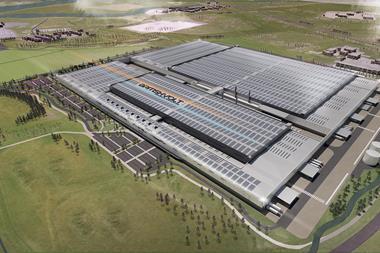


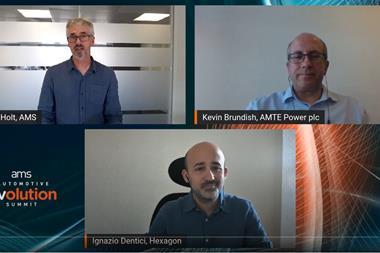




No comments yet